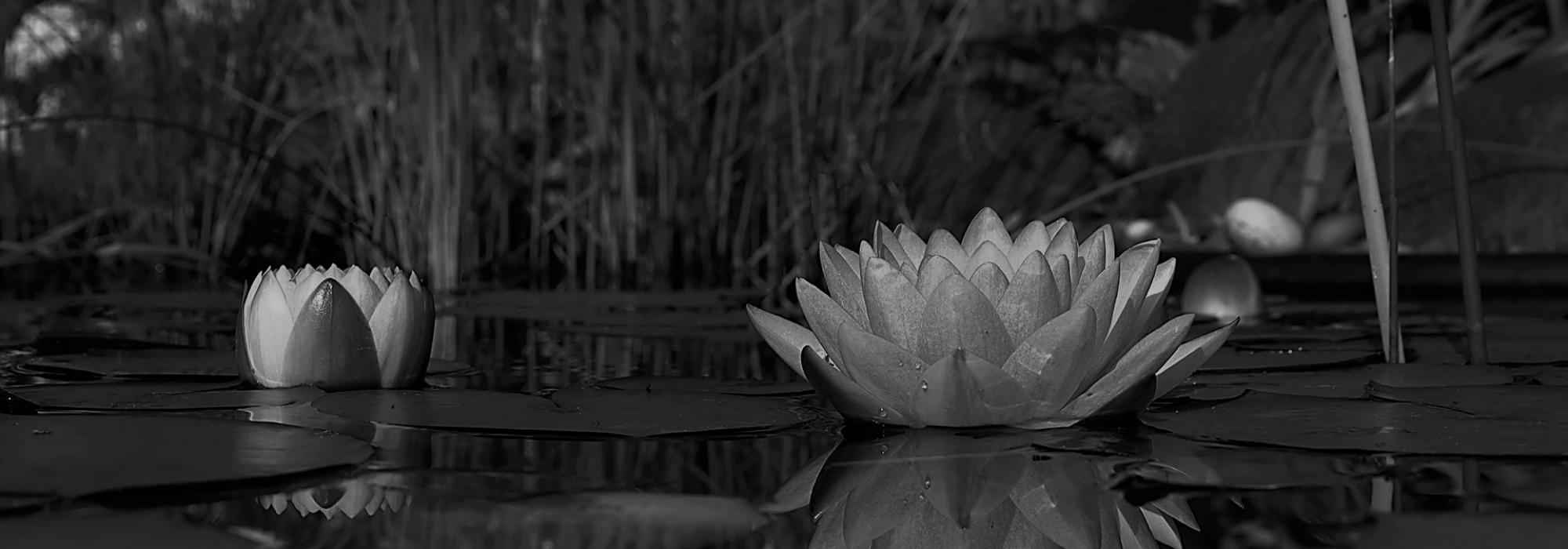ಭೂಮಿಕೆ
ಮಾಸರ್ತುದರ್ವೀಪರಿಘಟ್ಟನೇನ
ಸೂರ್ಯಾಗ್ನಿನಾ ರಾತ್ರಿದಿವೇಂಧನೇನ |
ಅಸ್ಮಿನ್ಮಹಾಮೋಹಮಯೇ ಕಟಾಹೇ
ಭೂತಾನಿ ಕಾಲಃ ಪಚತೀತಿ ವಾರ್ತಾ ||
ಮಹಾಭಾರತದಲ್ಲಿ ಯಕ್ಷ “ಏನು ವಾರ್ತೆ?” ಎಂದು ಪ್ರಶ್ನಿಸಿದಾಗ, “ಸೂರ್ಯನನ್ನು ಬೆಂಕಿಯಾಗಿ ಬಳಸಿ, ಹಗಲು-ರಾತ್ರಿಗಳನ್ನೇ ಒಲೆಗೆ ಇಂಧನವನ್ನಾಗಿಸಿ, ಮೋಹವೆಂಬ ಬಾಣಲೆಯಲ್ಲಿ ಋತು-ಮಾಸಗಳೆಂಬ ಸೌಟಿನ ಮೂಲಕ ಸಕಲ ಜೀವಿಗಳನ್ನೂ ಕಾಲನೆಂಬ ಬಾಣಸಿಗ ಬೇಯಿಸುತ್ತಿದ್ದಾನೆ” ಎಂಬುದು ಧರ್ಮರಾಜ ಕೊಟ್ಟ ಉತ್ತರ.
ನಿಜಕ್ಕೂ ವಾರ್ತೆಯೆಂದರೇನು? ವರ್ತಮಾನದ ವಿವರಣೆಯೇ ಅಲ್ಲವೇ? ಎಲ್ಲ ಕಾಲದಲ್ಲಿಯೂ ನಮ್ಮೀ ಜಗತ್ತಿನಲ್ಲಿ ನಿಲುಗಡೆಯಿಲ್ಲದೆ ನಡೆಯುತ್ತಿರುವ ಸಂಗತಿಗಳೆಂದರೆ ಹುಟ್ಟು ಮತ್ತು ಸಾವು—ಅವುಗಳ ನಡುವೆ ಜೀವನ, ಮತ್ತು ಅದರಲ್ಲಿ ಜೀವಿಗಳು ಕಾಣುವ ವಿವಿಧರೀತಿಯ “ಪಾಕ”. ಇವು ಜೀವಸ್ಪಂದವಿರುವ ಎಲ್ಲಕ್ಕೂ ಎಲ್ಲರಿಗೂ ಸಹಜವೇ ಆದರೂ ಅವನ್ನು ಕುರಿತು ಆಲೋಚಿಸುವ ಸೌಲಭ್ಯ ಮತ್ತು ಅದರ ಮೂಲಕ ಪಡೆಯಬಹುದಾದ ಸಿದ್ಧಿ ಮನುಷ್ಯನಿಗೆ ಮಾತ್ರ ಸೀಮಿತ.
ತಮ್ಮ ಜೀವನದಲ್ಲಿ ಮರಣವನ್ನು ಹಲವು ಬಾರಿ ಹತ್ತಿರದಿಂದ ಕಂಡ ಭೈರಪ್ಪನವರಿಗೆ ಸಾವು ಮತ್ತದರ ಇನ್ನೊಂದು ಮುಖವಾದ ಹುಟ್ಟಿನ ಬಗೆಗೆ ಕುತೂಹಲ ಕೆರಳಿದುದು ಆಶ್ಚರ್ಯಕರವೇನಲ್ಲ. ಆದರೆ ಆ ವಿಷಯಗಳನ್ನು ಕುರಿತು ಅವರು ಕಂಡುಕೊಂಡ—ಮತ್ತು ಕಲೆಯ ಮೂಲಕ ನಮಗೂ ಕಾಣಿಸಿದ—ಒಳನೋಟಗಳು ಮಾತ್ರ ನಿಜಕ್ಕೂ ಆಶ್ಚರ್ಯಕರ.
“ಪರ್ವ” ಬರೆದ ಬಳಿಕ ತಮ್ಮ ಮನಸ್ಸನ್ನು ಗಾಢವಾಗಿ ಆವರಿಸಿಕೊಂಡ ಸಾವಿನ ಭಾವವನ್ನು ಬೆನ್ನಟ್ಟಿ ಹೊರಟಾಗ ರೂಪುಗೊಂಡ ಕಾದಂಬರಿಯೇ “ನೆಲೆ” ಎಂದು ಭೈರಪ್ಪನವರೇ ಸ್ಪಷ್ಟಪಡಿಸಿದ್ದಾರೆ. ಪರ್ವದ ಉದ್ದಕ್ಕೂ ಹುಟ್ಟಿನ ಅನಂತ ಮುಖಗಳನ್ನು ಅವುಗಳ ಬಗೆಬಗೆಯ ಮುಸುಕುಗಳನ್ನು ಸರಿಸುವ ಮೂಲಕ ಅನಾವರಣಗೊಳಿಸಿದ ಲೇಖಕರ ಗಮನವು ಆ ಬಳಿಕ ಸಾವಿನತ್ತ ಸರಿದದ್ದು ಯುಕ್ತವೇ ಆಗಿದೆ. ಹುಟ್ಟನ್ನು ಹುಡುಕಲು ಹೊರಟವರಿಗೆ ಕೊನೆಯಲ್ಲಿ ಕಂಡದ್ದು ಸಾವು.
ನಮ್ಮ ಪರಂಪರೆಯು ಮೃತ್ಯುವಿನ ಅನಿವಾರ್ಯತೆಯನ್ನು ಒಪ್ಪಿಕೊಂಡಿದೆಯಾದರೂ ಅದೊಂದೇ ಸತ್ಯವೆಂದು ಹೇಳಿಲ್ಲ. ನಾವೆಲ್ಲರೂ ಅಮೃತಸಾಗರದ ಕಣಗಳೆಂಬ ವಿಶ್ವಾಸ ಅದಕ್ಕುಂಟು. ಹರಿಯುವ ನದಿ ನಿಶ್ಚಲವಾದ ಸಮುದ್ರವನ್ನು ಸೇರಿ ನೀರೊಂದು ಮಾತ್ರ ಉಳಿಯುವಂತೆಂದು ಈ ಪರಿಕಲ್ಪನೆಯ ತಾತ್ಪರ್ಯ. ಹಳೆಯ ನೀರು ಹರಿದಂತೆ ಹೊಸ ನೀರು ಕೂಡುತ್ತದೆ; ಇದನ್ನೇ “ಪ್ರವಾಹನಿತ್ಯತ್ವ” ಎನ್ನುವರು. ಭೌತಿಕವಾಗಿ ತಾನಿಲ್ಲವಾಗಲು, ಕೊನೆಯ ಪಕ್ಷ ತನ್ನದು ಏನಾದರೂ ಉಳಿಯಲೆಂಬುದು ಪ್ರತಿಯೊಬ್ಬರ ಬಯಕೆಯಷ್ಟೆ. ಇದಕ್ಕೆ ಕಾಲವು ಕಂಡುಕೊಂಡ ಪರಿಹಾರವೇ ಸಂತಾನ. ಸಂತಾನವೆಂದರೆ ಮಕ್ಕಳು ಮಾತ್ರವಲ್ಲ. ಕೆರೆ, ಬಾವಿ, ಉದ್ಯಾನ, ದೇವಾಲಯ, ಒಳ್ಳೆಯ ಗ್ರಂಥ—ಇವುಗಳ ನಿರ್ಮಿತಿಗೂ ಸಂತಾನವೆಂದೇ ಹೆಸರು. ಒಟ್ಟಿನಲ್ಲಿವು ಮನುಷ್ಯನಲ್ಲಿ ಸುಪ್ತವಾಗಿರುವ ಶಾಶ್ವತತೆಯ ಬಯಕೆಯ ಸಂಕೇತಗಳು.
ಪ್ರವೇಶಿಕೆ
“ನೆಲೆ” ಭೈರಪ್ಪನವರ ವಿನೂತನ ಸೃಷ್ಟಿಗಳಲ್ಲೊಂದು. ಕೇವಲ ನೂರ ಎಂಬತ್ತೇಳು ಪುಟಗಳಿರುವ ಕಾದಂಬರಿಯಲ್ಲಿ ಕಥಾತಂತು ಇಲ್ಲವೇ ಇಲ್ಲವೆಂಬಷ್ಟು ತೆಳುವಾಗಿದ್ದರೂ ಕೃತಿಯ ಒಟ್ಟಂದದ ಪರಿಣಾಮಕ್ಕೆ ಯಾವ ಕೊರತೆಯೂ ಆಗಿಲ್ಲ. ಪಾತ್ರಗಳಿರುವುದು ಕೆಲವೇ; ಆದರೆ ಪ್ರತಿಯೊಂದೂ ಪ್ರಸ್ಫುಟ. ಘಟನೆಗಳು ಮುಖ್ಯವಾಗಿ ನಡೆಯುವ ದೇಶ-ಕಾಲಪರಿಧಿಯೂ ಮಿತವಾದುದೇ. ಹಾಸನದ ಆಸುಪಾಸಿನಲ್ಲಿ, ಹತ್ತು-ಹನ್ನೆರಡು ದಿನಗಳ ಅವಧಿಯಲ್ಲಿ ಸನ್ನಿವೇಶಗಳು ತೆರೆದುಕೊಳ್ಳುತ್ತವೆ. ಆದರೆ ಅವು ನಮ್ಮೊಳಗೆ ಬಿಚ್ಚಿಡುವ ಭಾವಪ್ರಪಂಚದ ಹರಹು ಅಸೀಮ, ಅನಂತ.
ಜವರಾಯಿ ಮತ್ತು ಕಾಳಪ್ಪ ಕೃತಿಯ ಪ್ರಮುಖ ಪಾತ್ರಗಳು. ಇವರಿಬ್ಬರಿಗೂ ಯಮಧರ್ಮನ ಪರ್ಯಾಯಪದಗಳನ್ನೇ ಹೆಸರಾಗಿಸಿರುವುದು ಭೈರಪ್ಪನವರ ಔಚಿತ್ಯಪ್ರಜ್ಞೆಗೆ ಒಳ್ಳೆಯ ನಿದರ್ಶನ. ಬಾಲ್ಯಸ್ನೇಹಿತರಾದ ಅವರ ಪೈಕಿ ಒಬ್ಬ ಛಾಪಾಕಾಗದದ ವ್ಯಾಪಾರಿಯಾಗಿ ತನ್ನ ಬದುಕಿಡೀ ಹುಟ್ಟೂರಿನಲ್ಲಿಯೇ ಉಳಿದರೆ, ಇನ್ನೊಬ್ಬ ವಾಣಿಜ್ಯವ್ಯವಹಾರದಲ್ಲಿ ದೊಡ್ಡ ಹುದ್ದೆಯಲ್ಲಿದ್ದು ವಿಶ್ವಸಂಚಾರಿಯಾಗುತ್ತಾನೆ. ಒಬ್ಬ ಗೃಹಸ್ಥನಾದರೆ ಮತ್ತೊಬ್ಬನಿಗೆ ಮದುವೆಯಿಲ್ಲ. ಆದರೆ ತಾರುಣ್ಯದಲ್ಲಿ ಸ್ವೀಕರಿಸಿದ ಬ್ರಹ್ಮಚರ್ಯವ್ರತವನ್ನು ಇಬ್ಬರೂ ಪಾಲಿಸುವುದಿಲ್ಲ. ಕಾದಂಬರಿಯ ಆರಂಭದಲ್ಲಿಯೇ ಜವರಾಯಿ ಸಾಯುತ್ತಾನೆ; ಕಾಳಪ್ಪನಿಗೆ ಸಾವಿನ ಉತ್ಕಟ ಸಂವೇದನೆಯೊದಗಿ ಅವನು ಅದರ ಆಲೋಚನೆಯಲ್ಲಿ ಮುಳುಗುತ್ತಾನೆ.
ಮರಣದ ಬಗೆಗಿನ ಈ ಚಿಂತನೆಯನ್ನು ಹೊಸ ದಿಕ್ಕುಗಳಲ್ಲಿ ಹರಿಯಬಿಟ್ಟು ಆ ಮೂಲಕ ಕೃತಿಯ ಸಾಂದ್ರತೆಯನ್ನು ಇನ್ನಷ್ಟು ಹೆಚ್ಚಿಸಿರುವ ಪಾತ್ರ ಪಾರ್ವತಿಯದು. ವೃತ್ತಿಯಿಂದ ನರ್ಸ್ ಆದ ಈಕೆ, ಸಂಸಾರದಲ್ಲಿ ತನ್ನ ಭಾವನೆಗಳಿಗೆ ಸೂಕ್ತ ಸ್ಪಂದನೆ ಸಿಗದೆ ಒದ್ದಾಡುತ್ತಿರುವ ಜವರಾಯಿಗೆ ಸಂಗಾತಿಯಾಗಿ ಒದಗುತ್ತಾಳೆ.
ಸಂಸಾರಸ್ಥನಾದ ಜವರಾಯಿ, ಅವಿವಾಹಿತೆಯಾದರೂ ಸಂತಾನವಿರುವ ಪಾರ್ವತಿ ಮತ್ತು ಮದುವೆಯಾಗದ ಕಾಳಪ್ಪ—ಈ ಮೂವರು ತಮ್ಮ ತಮ್ಮ ಜೀವನಾನುಭವದ ಹಿನ್ನೆಲೆಯಲ್ಲಿ ಮೃತಿಯನ್ನು ಕುರಿತು ಯೋಚಿಸುವುದರಿಂದ ವಿಚಾರದಲ್ಲಿ ಏಕತಾನತೆಯಿರದೆ ಸಂಕೀರ್ಣತೆ ಹೆಚ್ಚಿದೆ. ಇದಕ್ಕೆ ಪೂರಕವಾಗಿ ಜವರಾಯಪ್ಪನ ಸಾವನ್ನು ಅವನಿಗೆ ವಿವಿಧ ರೀತಿಯಲ್ಲಿ ಸಂಬಂಧಿಸಿದವರು ಹೇಗೆ ಸ್ವೀಕರಿಸುತ್ತಾರೆಂಬುದರ ಚಿತ್ರಣವಿದೆ: ಸ್ನೇಹಿತನಾಗಿ ಕಾಳಪ್ಪ, ಹೆಂಡತಿಯಾಗಿ ಸುಬ್ಬಲಕ್ಷ್ಮಿ, ಪ್ರೇಯಸಿಯಾಗಿ ಪಾರ್ವತಿ ಮತ್ತು ಮಗನಾಗಿ ಕುಮಾರ್. ಮುಖ್ಯವಾದ ಕಥನೋಪಕರಣವಾಗಿ ಡೈರಿಯನ್ನು ಬಳಸಿರುವ ಕಾರಣ, ಪಾತ್ರಗಳು ವರ್ತಮಾನಕ್ಕಷ್ಟೇ ಸೀಮಿತವಾಗದೆ ನಿರಾಯಾಸವಾಗಿ ಭೂತ-ಭವಿಷ್ಯತ್ತುಗಳಲ್ಲಿಯೂ ಸಂಚರಿಸುವಂತಾಗಿದೆ. ಇಡಿಯ ಕೃತಿಯು ಅಧ್ಯಾಯಗಳಾಗಿ ವಿಭಕ್ತವಾಗದೆ ಏಕಧಾರೆಯಾಗಿ ಹರಿಯುವ ಕಾರಣ ಪರಿಣಾಮವು ಮತ್ತಷ್ಟು ಆಳವಾಗಿದೆ, ಉತ್ಕಟವಾಗಿದೆ.
ಘಟನೆಗಳೇ ಹೆಚ್ಚಾಗಿ ಇಲ್ಲದಿರುವ ಈ ಕಾದಂಬರಿಯ ಶಕ್ತಿಯಿರುವುದು ಪಾತ್ರಗಳ ಚಿತ್ತವೃತ್ತಿಗಳನ್ನು ಚಿತ್ರಿಸುವುದರಲ್ಲಿ. ಇದರಿಂದಾಗಿ ಕೃತಿಯ ಬಹುಭಾಗದಲ್ಲಿ ಆಲೋಚನೆಯ ಭಾಷೆಯನ್ನೇ ಬಳಸುವುದು ಅನಿವಾರ್ಯವಾಗಿದೆ. ಅಂದರೆ ಆಲೋಚನೆಯದ್ದೇ ಬೇರೊಂದು ಭಾಷೆಯಿದೆಯೆಂದು ಅರ್ಥವಲ್ಲ; ಮಾಮೂಲಿನದಕ್ಕಿಂತ ಇದರಲ್ಲಿ ವೇಗ ಹೆಚ್ಚೆಂದು ತಾತ್ಪರ್ಯವಷ್ಟೆ. ಬರೆಯುವಾಗ, ಮಾತನಾಡುವಾಗ ಯಾವ ಕ್ರಮವನ್ನು ಅನುಸರಿಸುವೆವೋ ಅದನ್ನು ನಮ್ಮೊಳಗೆ ನಾವೇ ಚಿಂತಿಸುವಾಗ ಅನುಸರಿಸುವುದಿಲ್ಲವಷ್ಟೆ. ಒಮ್ಮೆ ನಿಂತು, ಒಮ್ಮೆ ಓಡಿ, ಇಲ್ಲಿ ಜಿಗಿದು, ಅಲ್ಲಿ ಧುಮುಕಿ ಅನೂಹ್ಯವಾಗಿ ಸಂಚರಿಸುತ್ತವೆ ನಮ್ಮ ಚಿಂತನತರಂಗಗಳು. ಇದರಿಂದ ನಮಗೆ ಯಾವುದೇ ತೆರನಾದ ಅಸಮಗ್ರತೆ ಕಾಡುವುದಿಲ್ಲ. ಆದರೆ ಇನ್ನೊಬ್ಬರೊಂದಿಗೆ ಹೀಗೆಯೇ ಮಾತನಾಡಿದರೆ? ಅದು ಅರ್ಥವಿಲ್ಲದ ಕಗ್ಗವಾಗಿ ಪರಿಣಮಿಸುವುದರಲ್ಲಿ ಸಂಶಯವಿಲ್ಲ.
ಇಷ್ಟು ಸಂಕೀರ್ಣತೆಯಿರುವ ಪ್ರಜ್ಞಾಪ್ರವಾಹರೂಪದ ಕಥನವಿಧಾನವನ್ನು ಲೇಖಕರು ಕೃತಿಯೊಂದರಲ್ಲಿ ಬಳಸಿಕೊಳ್ಳುವುದು ಭಾಷೆಯ ಮೇಲಿನ ಅವರ ಹಿಡಿತಕ್ಕೆ ಸಾಕ್ಷಿ. ಈ ಕಾದಂಬರಿಯ ಹಲಕೆಲವು ಭಾಗಗಳಲ್ಲಿ ಇದನ್ನು ಗಮನಿಸಬಹುದಾದರೂ ಮೊದಲ ಕೆಲವು ಪುಟಗಳಲ್ಲಿದು ಎದ್ದುಕಾಣುವಂತಿದೆ. ಉದಾ: “ಒಂಬತ್ತೂವರೆ, ಇಷ್ಟರಲ್ಲಿ ಫ್ರಿಜ್ ಕ್ಲೀನಾಗಿ, ಅಕಸ್ಮಾತ್ ಮಾಡದಿದ್ದರೆ ಸಾಯಂಕಾಲ ಥೂ ಸೋಮಾರಿ ಮನುಷ್ಯ ಮುಂದೆ ಬರೂದು ಸಾಧ್ಯವೇ ಇಲ್ಲ. ತಂದೆ ತಾಯಿ ಸರಿಯಾಗಿ ಬೆಳಸಿದ್ದರೆ ತಾನೆ ಈ ವಯಸ್ಸಿನಲ್ಲಿ ನರ್ಸ್ ಸೂಳೆ ಇಟ್ಟುಕೊಂಡು ನಾನಾಗಿದ್ದರೆ ಇಮ್ಮಿಡಿಯೆಟ್ ಆಗಿ ಡೈವೊರ್ಸಿಗೆ ಹಾಕಿ ಹೆಂಗಸಿಗೆ ಮೊದಲು ಬೇಕಾದ್ದು ಆರ್ಥಿಕ ಸ್ವಾವಲಂಬನೆ...” (ಪು. ೧೧) . ಇದರ ವಿಶ್ವರೂಪವನ್ನು ಕಾಣಲು ಮಹಾಕೃತಿ ಪರ್ವಕ್ಕೇ ಶರಣಾಗಬೇಕು.
ಗಾತ್ರದಲ್ಲಿ ಕಿರಿದಾದರೂ ಹಿರಿದಾದ ಮಹತ್ತ್ವವುಳ್ಳ ಪ್ರಕೃತ ಕೃತಿಯ ಸಮಗ್ರ ವಿವೇಚನೆ ದೀರ್ಘ ಪ್ರಬಂಧವನ್ನೇ ಅಪೇಕ್ಷಿಸುತ್ತದೆ. ಇಂತಾದರೂ ಎಲ್ಲ ಸ್ವಾರಸ್ಯಗಳ ಮೇಲೂ ಬೆಳಕು ಮೂಡುವುದೆಂಬ ವಿಶ್ವಾಸವಿಲ್ಲ. ಇಷ್ಟೇ ಅಲ್ಲದೆ ಮಹಾಕೃತಿಯೊಂದನ್ನು ಸಂಪೂರ್ಣವಾಗಿ ಅರ್ಥೈಸಿಕೊಳ್ಳಲು ಸಾಧ್ಯವೇ ಇಲ್ಲ. ಹೀಗಾಗಿ ಪ್ರಸ್ತುತ ಲೇಖನದ ಮಿತಿಯೊಳಗೆ ಕಾದಂಬರಿಯಲ್ಲಿ ನಿರೂಪಿತವಾದ ಸಾವಿನ ಚಿತ್ರಣವನ್ನು ಕುರಿತು ಮಾತ್ರ ಚರ್ಚಿಸಲಾಗಿದೆ.
ಪಾತ್ರಚಿತ್ರಣ, ಕಥನತಂತ್ರ
ಕುಮಾರ್-ಮಾಲತಿ. ಇಡಿಯ ಕಾದಂಬರಿಗೆ ಕೇಂದ್ರಭೂತವಾದುದು ಕುಮಾರ್ ತನ್ನ ತಂದೆ ಜವರಾಯಿಗೆ ಹೇಳುವ ಮಾತು: “ನನ್ನನ್ನ ಹುಟ್ಸಿ ಅಂತ ನಾನು ನಿಮ್ಮನ್ನ ಕೇಳಿರಲಿಲ್ಲ. ಹುಟ್ಟಿಸಿದ್ದು ನಿಮ್ಮ ಮೊದಲ ತಪ್ಪು”. ಕೃತಿಯಲ್ಲಿ ಹಲವೆಡೆ ಅನುವೃತ್ತವಾಗುವ ಈ ವಾಕ್ಯ ಮೊದಲು ಪ್ರಸ್ತಾವಗೊಳ್ಳುವುದು ಕಾಳಪ್ಪ ಮತ್ತು ಕುಮಾರರ ಸಂವಾದದಲ್ಲಿ (ಪು. ೨೪). ಇಷ್ಟು ಗಹನವಾದ ಸಂಗತಿಯನ್ನು ತಲಪುವ ವೇಳೆಗೆ ಕಾದಂಬರಿಯಲ್ಲಿ ಸಾಗಿರುವುವು ಕುಮಾರ್ ಮತ್ತು ಮಾಲತಿ ದಂಪತಿಗಳ ಜೀವನದಲ್ಲಿಯ ಅತ್ಯಂತ ಸಾಮಾನ್ಯವಾದ ಸಂದರ್ಭಗಳು. ಮುಂದೆ ಆವರಿಸಿಕೊಳ್ಳಲಿರುವ ಶೂನ್ಯತೆಯನ್ನು ತುಂಬಿಕೊಡಲೋ ಎಂಬಂತೆ ಈ ಭಾಗದಲ್ಲಿ ಘಟನೆಗಳು ಸಮೃದ್ಧವೂ ಸವಿವರವೂ ಆಗಿವೆ. ತೊಳೆಯದಿರುವ ಫ್ರಿಜ್ಜಿನಿಂದ ಮೊದಲ್ಗೊಂಡು ಕೆಲಸದ ಇಂಕ್ರಿಮೆಂಟಿನವರೆಗೆ ದಿನನಿತ್ಯದ ಎಷ್ಟೋ ವಿವರಗಳು ಇಲ್ಲಿ ಒಕ್ಕಣೆಗೊಂಡಿವೆ. ಕಥೆಯು ಪ್ರಾರಂಭವಾದ ಇಪ್ಪತ್ತೈದು ಪುಟಗಳ ಒಳಗೇ ಮಾಲತಿ ಮತ್ತು ಕುಮಾರರು ವಾಚಕರಿಗೆ ಸಂಪೂರ್ಣವಾಗಿ ಪರಿಚಿತರಾಗಿಬಿಡುತ್ತಾರೆ.
ಇಬ್ಬರೂ ಲೆಕ್ಕಾಚಾರದ ಸ್ವಭಾವದವರು. ಕಾಳು ಮಾವ ಮನೆಗೆ ಬರುವರೆಂದು ಗಂಡ ಹೇಳಿದಾಗ ಹೌಹಾರಿದ ಮಾಲತಿ ಅವರು ಆರ್ಥಿಕವಾಗಿ ನೆರವಾಗಬಲ್ಲರೆಂದು ತಿಳಿದೊಡನೆ ಗುಲಾಬ್ ಜಾಮೂನಿನ ಮೂಲಕ ಸತ್ಕರಿಸುತ್ತಾಳೆ. ಅವರನ್ನು ಕಂಡಕೂಡಲೇ ಇವಳ ಗಮನಕ್ಕೆ ಬಂದದ್ದು ಆತ ತೊಟ್ಟಿದ್ದ ಬಟ್ಟೆ; ಅವು ಜಪಾನ್ ಪಾಲ್ಯೆಸ್ಟರ್ನವೆಂದು ಕ್ಷಣಾರ್ಧದಲ್ಲಿ ಗುರುತಿಸುತ್ತಾಳೆ. ಹೆಂಡತಿಗಿಂತ ಕಡಮೆ ಆದಾಯವಿರುವ ಕುಮಾರ್ ಕಾಳಪ್ಪನ ರೂಮಿನಲ್ಲಿ ಟೆಲಿಸ್ಕೋಪ್ ನೋಡಿದಾಗ ಕೇಳಿದ ಪ್ರಶ್ನೆ “ಎಷ್ಟು ಕೊಟ್ಟಿರಿ?” ಎಂದು. ಮಹಾಕವಿಯಾಗಲೆಂದು ಆಶಿಸಿ ಜವರಾಯಿ ತನ್ನ ಮಗನಿಗೆ ಕುಮಾರವ್ಯಾಸನೆಂದು ಹೆಸರಿಟ್ಟಿರುವ ಹಿನ್ನೆಲೆಯಲ್ಲಿ ಕುಮಾರನ ಈ ಪ್ರಶ್ನೆ ಚೋದ್ಯವೆನಿಸುತ್ತದೆ. ಹೀಗೆ ಕೆಲವೇ ಮಾತುಗಳಲ್ಲಿ ಪಾತ್ರಾಂತರಂಗವನ್ನು ಪ್ರಕಟಿಸುವುದು ಸ್ವಲ್ಪದ ಸಾಧನೆಯಲ್ಲ. ಇದನ್ನು ಲೇಖಕರು ಸಿದ್ಧಿಸಿಕೊಂಡಿರುವುದು ವಾಚಕರ ಭಾಗ್ಯ.
ಇಂಥವರ ಮೇಲೆ ಜವರಾಯಿಯ ಸಾವು ಮಿಗಿಲಾದ ಪ್ರಭಾವವನ್ನುಂಟುಮಾಡುತ್ತದೆ. ಇಲ್ಲಿಯವರೆಗೆ “ನನ್ನನ್ನು ಹುಟ್ಟಿಸಿದ್ದು ನಿಮ್ಮ ತಪ್ಪು” ಎನ್ನುತ್ತಿದ್ದ ಕುಮಾರ್ ತಂದೆಯ ಶ್ರಾದ್ಧಕ್ಕಾಗಿ ಸಾವಿರಾರು ರೂಪಾಯಿ ಖರ್ಚು ಮಾಡುವುದಲ್ಲದೆ ತಲೆಯನ್ನೂ ವಪನ ಮಾಡಿಸಿಕೊಳ್ಳುತ್ತಾನೆ. ಅಷ್ಟೇ ಅಲ್ಲದೆ, “ಹುಟ್ಟಿಸೆಂದು ನಾನು ಕೇಳಿರಲಿಲ್ಲ” ಎನ್ನುತ್ತಿದ್ದವನು ವಾರ್ಷಿಕ ಶ್ರಾದ್ಧದ ಒಳಗಾಗಿ ತಮಗೊಂದು ಮಗುವಾಗಬೇಕೆಂದು ಹೆಂಡತಿಗೆ ನಿರ್ಣಾಯಕವಾಗಿ ಹೇಳುತ್ತಾನೆ. ಮಾಲತಿಯಾದರೋ ಇದಕ್ಕೆ ಮುಂಚೆ ನೃತ್ಯಭಂಗಿಯಲ್ಲಿ ಕಾಂಡೊಮ್ ಹಿಡಿದು ಗಂಡನನ್ನು ಮಗು ಬೇಡವೆಂದು ಒಲಿಸಿಕೊಳ್ಳುತ್ತಿದ್ದವಳು ಈಗ ಅವನಿಗೆ ಪ್ರತಿ ಹೇಳದಂತಾಗುತ್ತಾಳೆ. ಈ ಮೂಲಕ ಒಬ್ಬರ ಸಾವಿನಿಂದ ಇತರರಲ್ಲಿ ಆಗುವ ಪರಿವರ್ತನೆಯನ್ನು ಲೇಖಕರು ಮಾರ್ಮಿಕವಾಗಿ ಚಿತ್ರಿಸಿದ್ದಾರೆ.
ಕುಮಾರನ ಮನಃಪರಿವರ್ತನೆಗೆ ಸ್ಪಷ್ಟವಾದ ಕಾರಣ ದೊರೆಯದಿದ್ದರೂ ಅದು ಭಯಜನಿತವಾದುದೆಂದು ಅನುಮಾನಿಸಬಹುದು. ಸಂಗತಿಯೊಂದರ ಹಿನ್ನೆಲೆಯಲ್ಲಿ ಇದು ಸ್ಫುಟವಾದೀತು. ಹೆಣವನ್ನು ಸುಡುವಾಗ ನೋಡಿದ ತನ್ನ ತಂದೆಯ ಗುಹ್ಯಸ್ಥಾನವು ಕುಮಾರನ ಕನಸಿನಲ್ಲಿ ಬೃಹದಾಕಾರವಾಗಿ ಬೆಳೆಯುವಂತೆ ಕಾಣಿಸಿಕೊಂಡು ಅವನಿಗೆ ಭಯವಾಗುತ್ತದೆ: “...ಒಂದೂವರೆ ದಿನದಿಂದ ಕೊರಡುಗಟ್ಟುತ್ತ ಬಂದ ಅಪ್ಪನ ಶಿಶ್ನವು ಬಿಗಿತು ದೊಡ್ಡದಾಗುತ್ತಾ ಆಗುತ್ತಾ ನನಗೆ ಆಶ್ಚರ್ಯ ಅಲ್ಲ ಉತ್ಸಾಹ ಅಲ್ಲ ಭಯ ಹೂಂ ಭಯ ... ಹೊಟ್ಟೆಯೊಳಗಿನ ಕರುಳು ಮೇಲ್ಮುಖವಾಗಿ ಒತ್ತುತ್ತಾ ಕಣ್ಣುಮೂಗುಗಳಿಂದ ಭಯದ ಬಿಸಿ ಉಕ್ಕಿ ಮೈ ಎಲ್ಲ ನಡುಗಿ ಬೆವೆತು...” (ಪು. ೫೪). ಅಂತರಂಗಪರಿವರ್ತನೆಯ ಕಾರಣವನ್ನು ಹೀಗೆ ಕನಸಿನ ಮೂಲಕ ನಿರೂಪಿಸಿರುವುದು ಲೇಖಕರ ಔಚಿತ್ಯಪ್ರಜ್ಞೆಗೆ ಸೂರ್ಯಸಾಕ್ಷಿ. ಕುಮಾರನ ಬದಲಾವಣೆಗೆ ಮತ್ತೂ ಪುಷ್ಟಿಕೊಡುವಂತೆ ನಕ್ಷತ್ರಮಂಡಲಗಳ ವರ್ಣನೆಯಿದೆ. ಕಾಳಪ್ಪನೊಡನೆ ಅಗಾಧವೂ ಅನಂತವೂ ಆದ ನಕ್ಷತ್ರಗಳನ್ನು ನೋಡುತ್ತ ಕುಮಾರ್ ತನ್ನ ಅಲ್ಪತೆಯನ್ನು ಮರೆತಿರಬಹುದು. ಮನುಷ್ಯರ ಮಟ್ಟಿಗೆ ಸಾವನ್ನು ಮೀರಿ ನಿಂತಿರುವಂತೆ ಕಾಣುವ ನಕ್ಷತ್ರಗಳು ಕುಮಾರನಲ್ಲಿ ಶಾಶ್ವತತೆಯ ಬಯಕೆಯನ್ನು ಕೆರಳಿಸಿ ಸಂತಾನಾಪೇಕ್ಷೆಗೆ ನಾಂದಿ ಹಾಡಿರಬಹುದು. ಈ ಸಂದರ್ಭದಲ್ಲಿ ಅವನಿಗೆ ಕಾಳಪ್ಪ ಹೇಳುವ ಮಾತು ಕೂಡ ಅವನ ಬದಲಾವಣೆಗೆ ಕಾರಣವೆಂದರೆ ಅಸಂಭಾವ್ಯವೆನಿಸದು: “ನೀನು ನನ್ನನ್ನ ಹುಟ್ಟಿಸಿದ್ದು, ಹೆತ್ತದ್ದು ತಪ್ಪು ಅಂತ ಬರೀ ಅಂದರೆ ತಪ್ಪು ಅಂತ ಸಾಧಿಸಿ ತೋರಿಸಿದ ಹಾಗಾಗುಲ್ಲ. ಇಕೊ ನೊಡು, ನೀನು ಸೃಷ್ಟಿಸಿದ ನನ್ನ ಮೇಲೆ ನನಗೆ ಇಷ್ಟವಿಲ್ಲ. ಆದ್ದರಿಂದ ಆತ್ಮಹತ್ಯೆ ಮಾಡ್ಕತೀನಿ ಅಂತ ಭಾವರಹಿತನಾಗಿ ಜೀವ ಕಳೆದುಕೊಂಡರೆ ಮಾತ್ರ ಹುಟ್ಟಿಸಿದ, ಹೆತ್ತ ಕೆಲಸವನ್ನು ತಪ್ಪಂತ ಸಾಧಿಸಿದ ಹಾಗಾಗುತ್ತೆ ... ಬದುಕಿಗೆ ಅರ್ಥವೇ ಇಲ್ಲ, ಜೀವಿಸೂದಕ್ಕಿಂತ ಹುಟ್ಟದಿದ್ದರೇ ಚೆನ್ನಾಗಿತ್ತು ಅನ್ನುವ ಏಕೈಕಭಾವನೆಯಿಂದ ಮಾಡಿಕೋಬೇಕು. ನಿನಗೆ ಜೀವಭಯವಿದೆ. ಅಂದರೆ ಜೀವಪ್ರೀತಿಯಿದೆ” (ಪು. ೨೫). ಈ ವಾಕ್ಯವು ಕಾದಂಬರಿಯ ಪ್ರಮುಖ ದರ್ಶನಗಳಲ್ಲಿ ಒಂದೂ ಹೌದು.
To be continued.















































